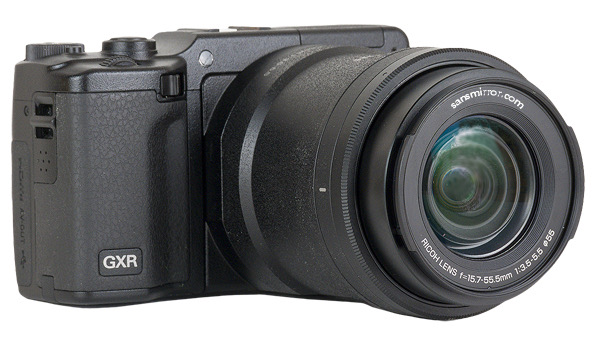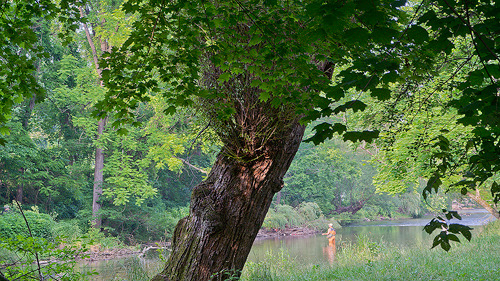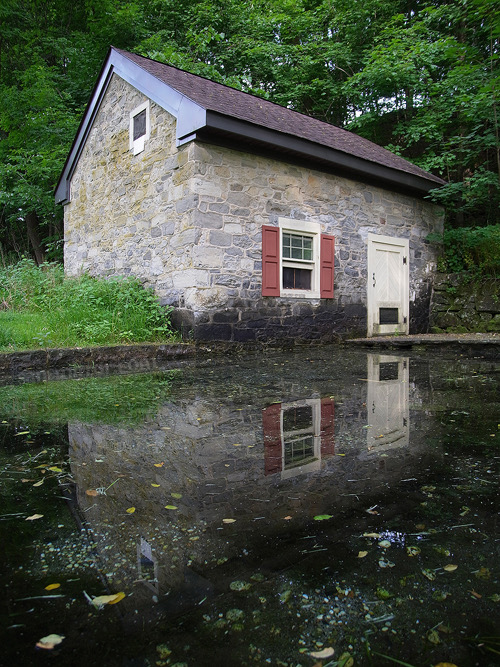
What is it?
The A16 24-85mm lensor module reviewed here is a 15.7-55.5mm f/3.5-5.5 lens sealed to a Sony 16mp APS sensor. This is the fifth module released by Ricoh for the GXR body (see my GXR review for more about the camera and its basic functions). Given that this new module has the respected Sony 16mp APS sensor in it, one would expect the performance to be at least equal to the 16mp Sony NEX cameras.
I'm not going to repeat my comments about the GXR camera body itself (again, see my GXR review); I'll limit myself to this module.
While the module is relatively light at 12.4 ounces (350g), the depth of the lens at 3.7" (93.3mm) makes the unit a big larger than we're used to with the GXR. Indeed, with the module mounted on the GXR body, the camera is no longer in the pocketable range, by any stretch of the imagination. It's about the same size as a NEX-5 with the kit lens; so it's out of compact camera size.
The lens itself stretches to 4.5" (~12cm) when at the 85mm position, which further takes the camera out of the compact size range. That said, for a 24-85mm that covers the APS sensor size, the lens is a bit smaller than you'd expect.
Inside the lens we've got a 9-blade aperture mechanism, and the lens itself is an 11-element, 9-group design with three aspherical lenses and some high-refraction glass. One unique aspect is that the inner barrel has 55mm filter rings, but the outer barrel has a twist off plastic bayonet piece that you mount the optional (yuck) collapsing lens hood on. The inner lens barrel also has a simple bayonet for regular lens hoods. The lens partially retracts when the camera is not on.
Minimum focus is 10" (25cm).
There are no switches or controls on the module (lens or main module area). Neither the sensor nor the lens have image stabilization.
A few new features have been added to camera firmware along the way, including a new tonal compression system, ISO bracketing, the ability to shoot raw only (previously we could only shoot raw+JPEG), addition of Copyright information to EXIF data, and a few other minor bits and pieces.
Street price is around US$600.
How's it Handle?
Not much to say here, as this module doesn't really change the basic GXR handling. That's a good thing, as the GXR is a very well-designed camera with a lot of photographer-centric options. With the new functions, the menus are getting a little long, but that's a problem all cameras are starting to share.
There's no focus ring or zoom ring on the module, so you're flying by wire. It takes over two seconds to zoom from 24mm to 85mm (or vice versa), so this will slow some shooters down a bit.
Macro mode focus is not supported.
How's it Perform?
The lens: We've got visible barrel distortion at 24mm, pin cushion at 85mm. Both would need some correction if you're a fan of straight lines, but that's simple enough to do in post these days. Lateral chromatic aberration seems well handled, but there's some longitudinal aberration, mostly visible as purple edges on very high contrast edges. Vignetting isn't really an issue: modest amounts wide open that correct quickly. Sharpness is excellent centrally and still good in the corners, especially if you stop down a bit.
Overall the lens part of the equation delivers very good results, better than what I'd expect at the price (sensor plus lens).
The sensor: As you'd expect from a Sony APS sensor, very strong performance, especially since Rioch restricts the range from 200 to 3200 (there's also a LO, equivalent to 100). Base ISO is excellent, results to ISO 800 are hard to distinguish from the lower ISO values, while ISO 3200 is still not particularly noisy, with mostly luminance noise.
JPEGs are very nice in terms of color and saturation, but without the Dynamic Range Compensation set I had to really watch for blown highlights. Consider this image:

I would have expected that an APS sensor would have handled this situation more gracefully than the Ricoh did. Even in raw I'm not getting the impression that this module's sensor matches the NEX-5n in terms of dynamic range. Still quite usable, mind you, just a bit weaker than I expect from this sensor.
Here's a straight-out-of-camera JPEG at 24mm. Nice greens, slightly warm color:

Final Words
There's nothing really wrong here except the value proposition. I really don't like paying over and over for sensors, and Ricoh's implementation of the Sony 16mp sensor here didn't exactly knock it out of the park. For the investment one would have in a GXR after buying this and maybe another module or two, you've overspend for what feels more like good consumer camera image quality performance rather than exceptional high end. We're a bit over US$1000 for the body and lessor here. I'd want that to beat the NEX 5n performance, but it does't quite equal it. Of course, at the moment Sony doesn't have a compact 24-85mm option, only a 28-85mm option that's bigger. Personally, I value 24mm a lot, so the GXR's new module stays for the time being. But I'd say that Ricoh really needs to up their game now. We've got some excellent mirrorless cameras with more coming. I can't quite place this camera/lens combo in the highest category of what's available.
If you've got a GXR body, investing in this lens is a no-brainer; you'll up your pixel count, get near state-of-the-art sensor capability, and a good lens up front. But someone starting from scratch is going to have a harder time justifying the cost/performance ratio.
Another way of looking at the GXR with the 24-85mm lensor is this: it's a large sensor compact camera. Unfortunately it suffers a bit here. First, it's far larger than other compact camera solutions, even those with large sensors (e.g. Sony RX-100, Canon G1X). Second, it's costlier. But it is more flexible and updatable. I'm not sure those pluses are worth the minuses, though.
2018: this model is out of production and no longer available new. But used copies can be found.
